Although this archive deliberately avoids detailing stories of crimes or court cases. some reference to how Law and Order have been maintained over the centuries is appropriate.
Early references in the written press from the 18th and early 19th Centuries detail the existence of local Tenants Associations from within the Manors of the Duke of Buccleuch. Back in 1777 this association published a list in the Coventry Herald of the various rewards on offer for the conviction of offenders in various disparate areas, including House Breaking and Horse Stealing at the top of the rewards list, then rewards for other animal / fowl theft down to the theft of turnips or wood from hedges.
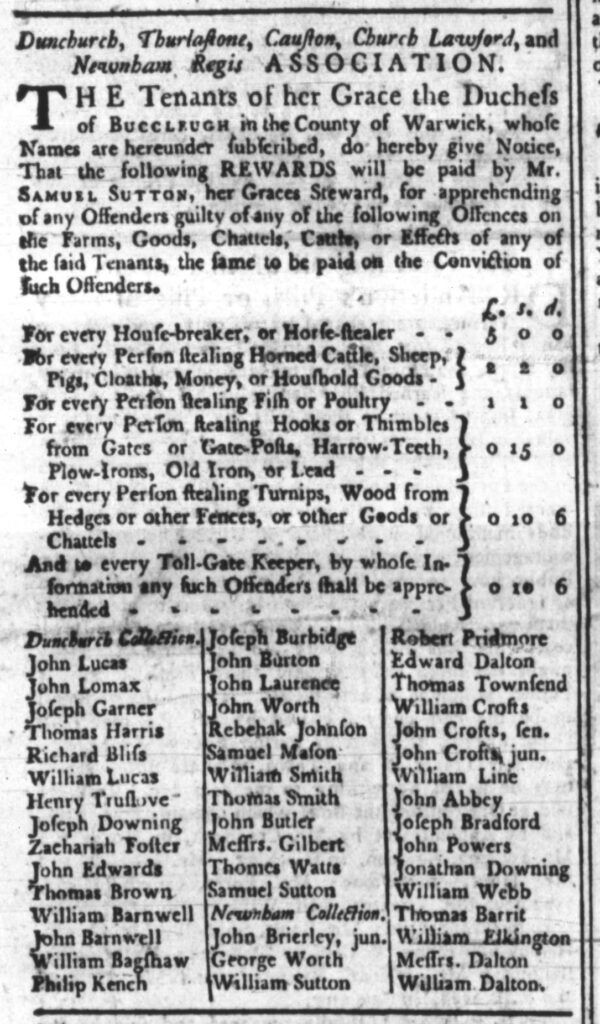
This was followed by an even more local association, referred to as the “Church Lawford association for the Prosecution of Felons etc”, who contributed to the reward for a sheep-related crime in 1800, as detailed in the Coventry Standard.
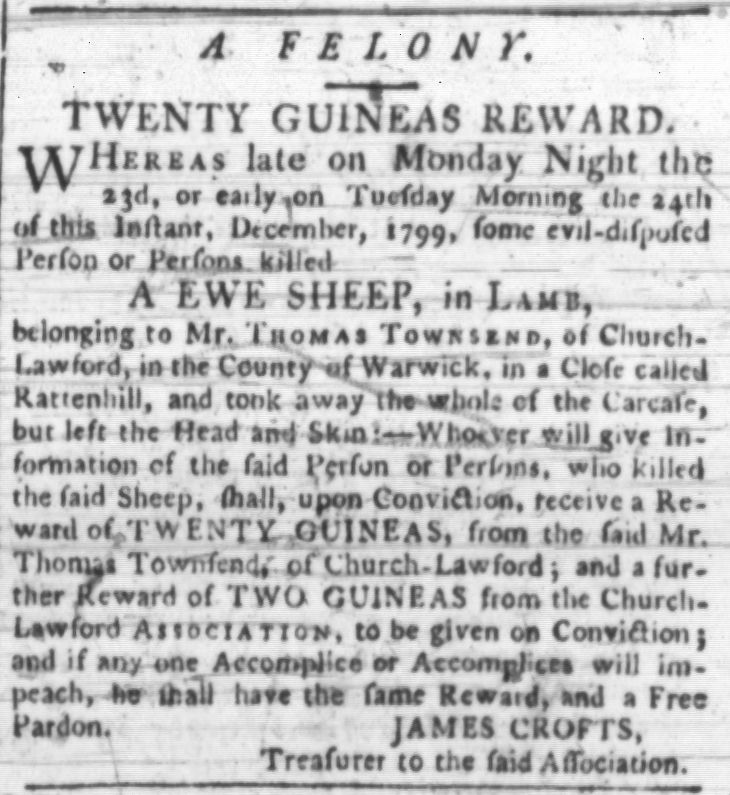
The Church Lawford Association existed for the first part of the 19th Century, holding an annual meeting in the Red Lion. The example below are for 1815 and 1817 from the Coventry Standard.
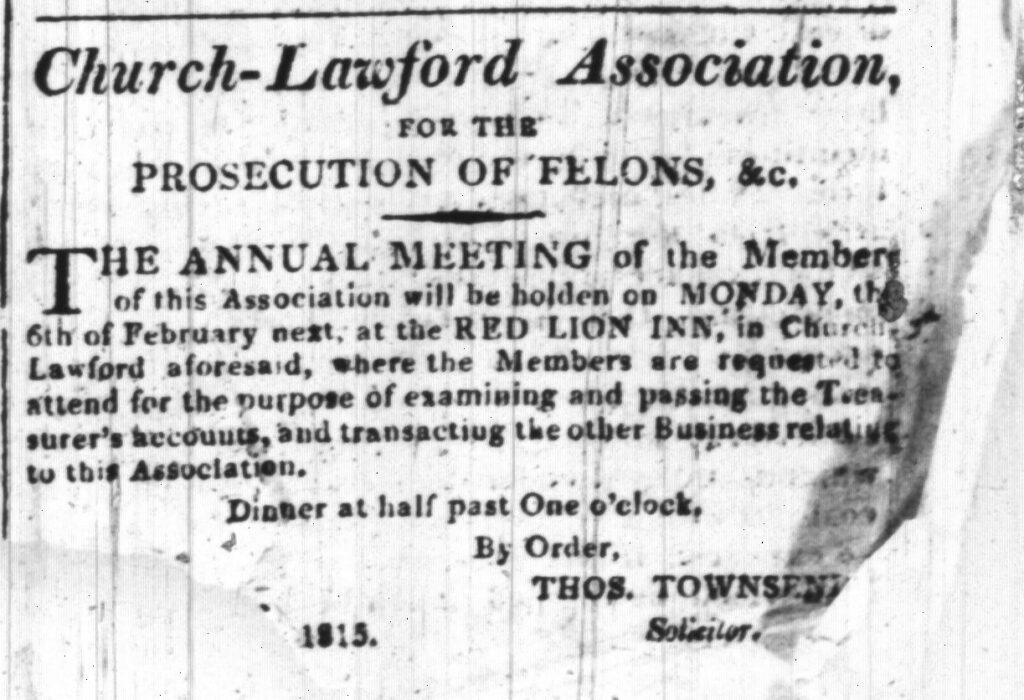
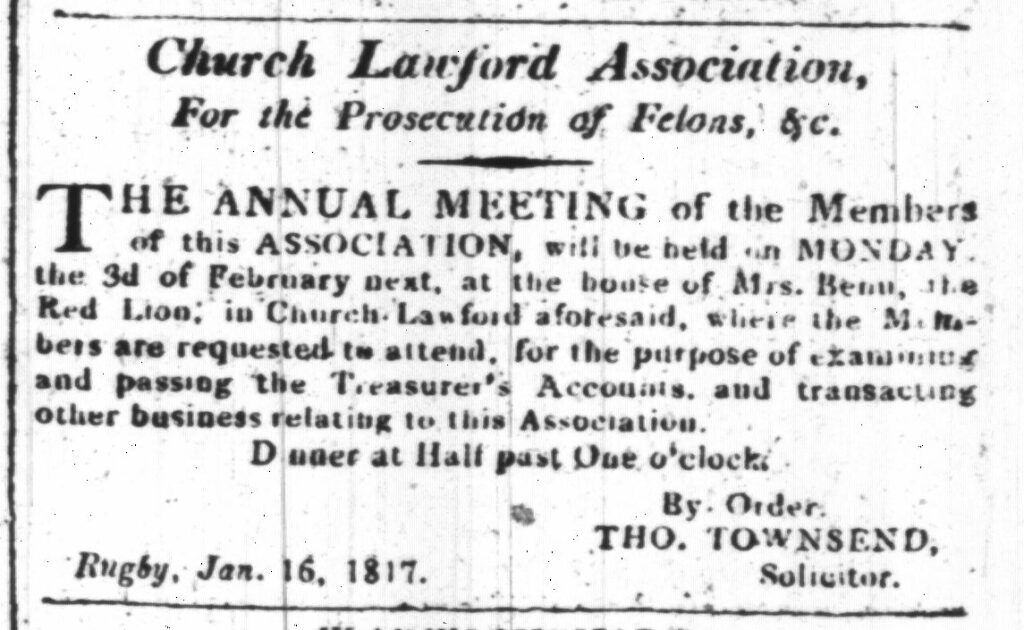
The association was focussed on farm-related issues, with most of the members being from the farming community. In parallel the Manor itself took charge of prosecutions for poaching of the local game, issuing warnings in the local press – such as this one in the Coventry Standard of 1811.
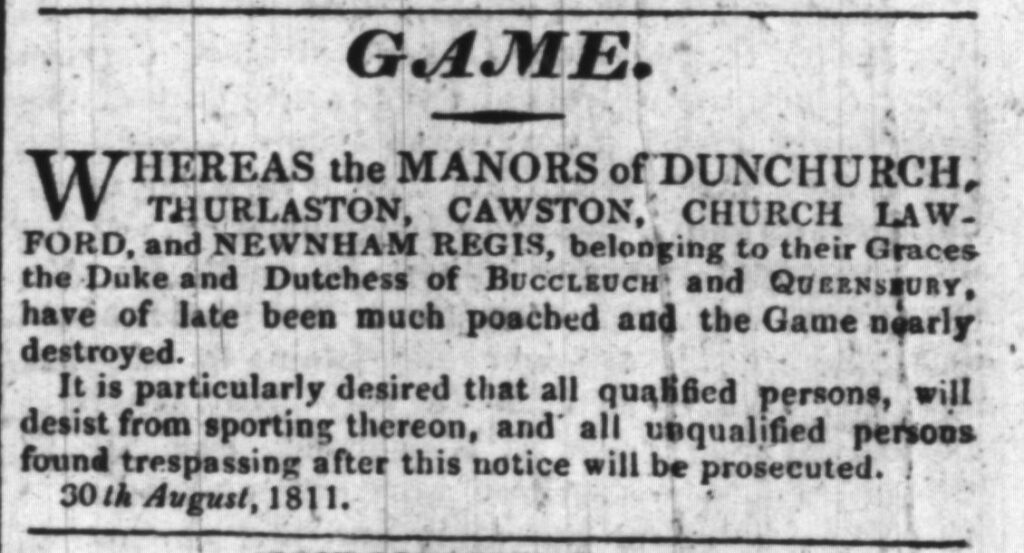
The Village Constable role was introduced in the early 19th Century, but it was still a local affair, with a suitable villager deputised to perform the role, which was more than just a simple peacekeeping role. The constable was also known as the Petty Constable, and a single person (typically male) was appointed for a year to operate at the Parish level. It is not too clear whether Church Lawford would have a separate constable – there are certainly records from Kings Newnham for this role – see below. The constable would deliver people to the courthouse, control the local stocks, collect taxes and rates from villagers, deal with church non-attendance, attend inquests and trials, deal with vagrants and maintain lists of potential jurors. The peace-keeping role also extended to managing a village militia if one was required. More mundane jobs including paying the local mole catcher, as can be seen in the summary below for the Kings Newnham Constable, with the right hand page showing those that were being taxed to fund the constable’s expenses.
The Village Constable concept lasted until the 1840s when a County based policing scheme was introduced – and this was probably the time the local association for the prosecution of felons was no longer required.
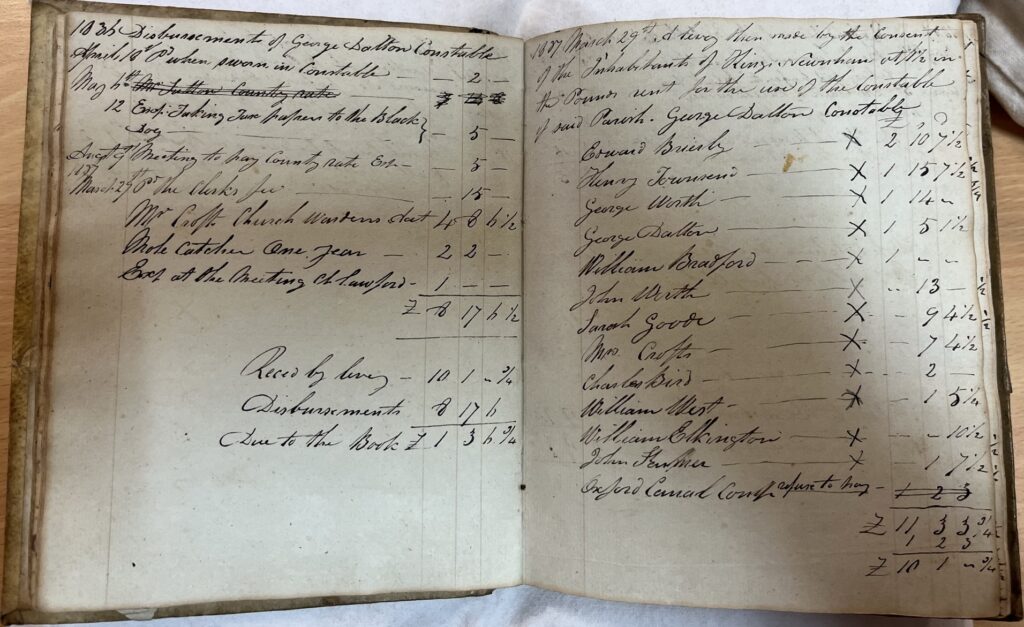
See here for more details on general village governance in those days, and there is an introduction to county-wide policing in Warwickshire on the British Police History website here.
